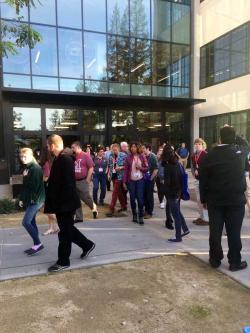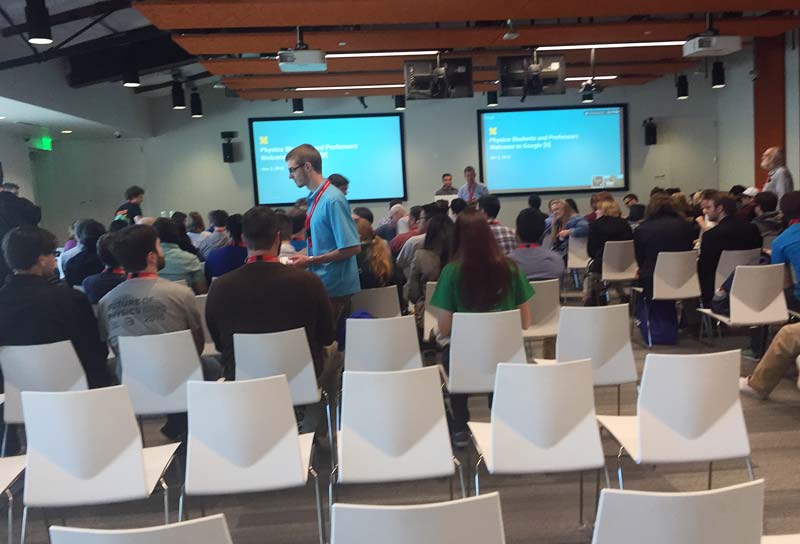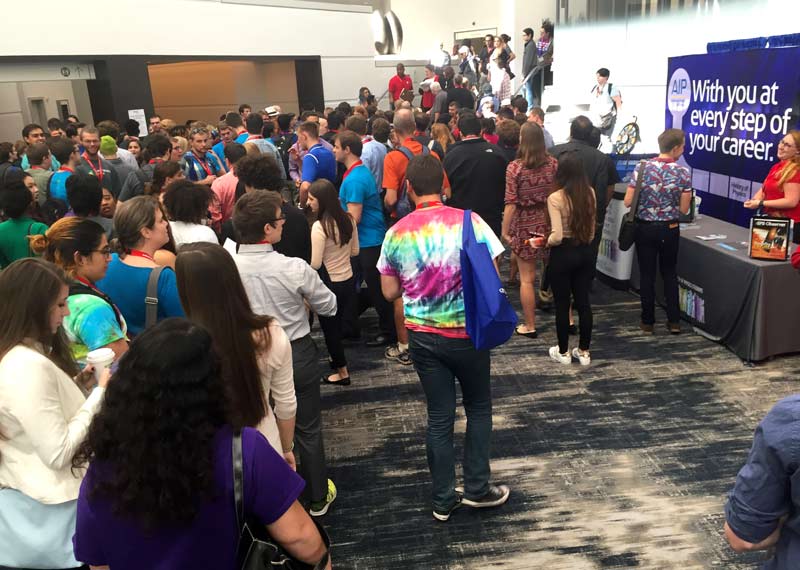Sigma Pi Sigma Physics Congress (PhysCon)
November 3, 2016 to November 5, 2016
San Francisco, CA
Meeting host: By:Sonia Cyuzuzo and Shannon McNease
SPS Chapter:
 In April of 2016 our SPS chapter sponsor, Dr. Tim Head, told us that Physcon was coming up. Our small chapter had been saving for three years so physics students could afford to go. We all looked around excitedly while Dr. Head played the introduction video from SPS’s website. We discussed budget, travel plans, and most importantly, the tours. When Google was mentioned our attention was immediately grabbed. “Google X, as in the secret invention branch?” Shannon asked. And from that moment we all knew we had to go.
In April of 2016 our SPS chapter sponsor, Dr. Tim Head, told us that Physcon was coming up. Our small chapter had been saving for three years so physics students could afford to go. We all looked around excitedly while Dr. Head played the introduction video from SPS’s website. We discussed budget, travel plans, and most importantly, the tours. When Google was mentioned our attention was immediately grabbed. “Google X, as in the secret invention branch?” Shannon asked. And from that moment we all knew we had to go.
After weeks of planning and fundraising, we finally landed in San Francisco. Besides poster presentation and networking, the Google X tour was our favorite part of the conference. Like many other students who attended this tour, the name Google was enough to pique our interest, and we were eager to learn about what they were working on.
We all gathered on Thursday morning and filled up more than three charter buses. We arrived about 30 minutes later at a low key building in the middle of a neighborhood. The buildings were made of tan brick, and the only thing to identify Google were the bright, classic Google bikes.
The tour was made of two main parts: a detailed presentation about ongoing projects, including a quick show and tell, and a brief tour of the actual Google X "design kitchen," the term for their R&D facility. Two of the projects got the most attention from students: Project Loon and the self-driving car.

“Project Loon” is designed to provide Internet access to areas that don’t have it by creating a wireless network linked by high-altitude balloons. Three engineers—Sameera P., who had a background in aerospace engineering, Chad B., a mechanical engineer, and Bruce M., an electrical engineer—explained the project in detail. We learned how it is designed in such a way that each balloon transfers information at 20 km in altitude. As of right now, each balloon provides internet within a range of 40 km and lasts up to three months. Some of the challenges this project faces include cooling and heating the system in such high altitudes and the battery lifetime. Several scientists including physicists and engineers are studying on how they can optimize this system. With further discoveries, the Loon project could be the potential future of internet distribution.
The other project that gained the most attention and left the audience eager to learn more was the self-driving car. Simon V. presented this project and grabbed the most audience attention because he also has a background in physics. In detail, Simon talked about some of the motivations behind this project. First, the fact that a lot of people die from car accidents, mainly due to human error. Second, there are people who simply can’t see or are physically disabled, but still need to use regular transportation without assistance. There are three main questions they always must consider, Simon said: The current location of the vehicle, what is around and what the things around are about to do next. With these three questions in mind, they prepare the vehicle to go through regular traffic. One of the students in the room was curious about what would happen if two self-driving cars met in traffic. Simon answered by saying that that is one of the cases they intend to consider in the future.

In an interview with a student who wished to remain anonymous, the Google X tour was incomplete . This student explained that they were happy to learn about all the projects at X , but that they would have loved to see a lot more action. “A tour in the self-driving car or some time in the testing room where the algorithm and the science behind it are developed would have been a lot more exciting,” said the student.
On the other hand, this tour was attended by more than 100 people; it would have been hard for everyone to take a ride in the vehicle within a reasonable amount of time. The student also said that they were very inspired by these projects and look forward to what they will bring to the future. As part of the inspiration, the students were eager to hear how they can join the Google X team. Stanley G., who presented the “How to Join Google X” presentation, encouraged students to think about what interests them the most, and to search for it, arguing that it is important to pursue that which excites you the most.
The Google X initiative’s forward-thinking atmosphere, compassion, and creativity was evident throughout the tour. Due to having the best staff, they are solving the unsolvable through out-of-the-box solutions. To hear firsthand the knowledge and insight the team members had was a once in a lifetime experience.